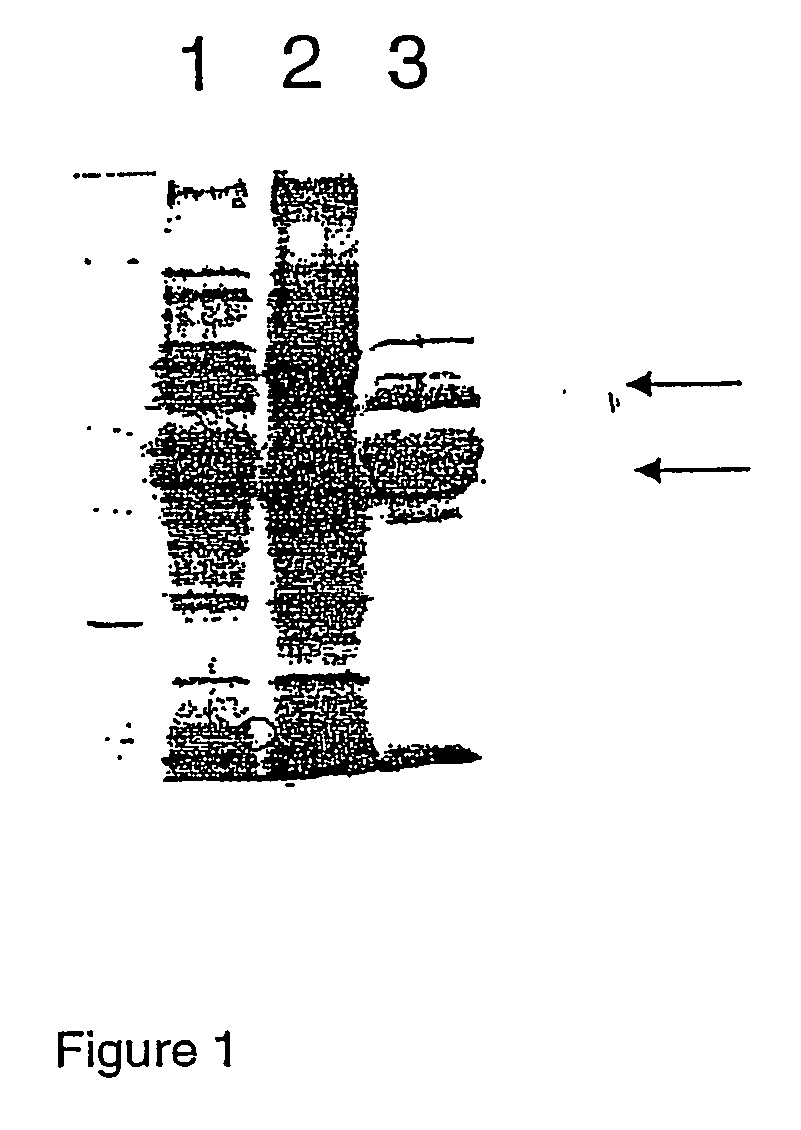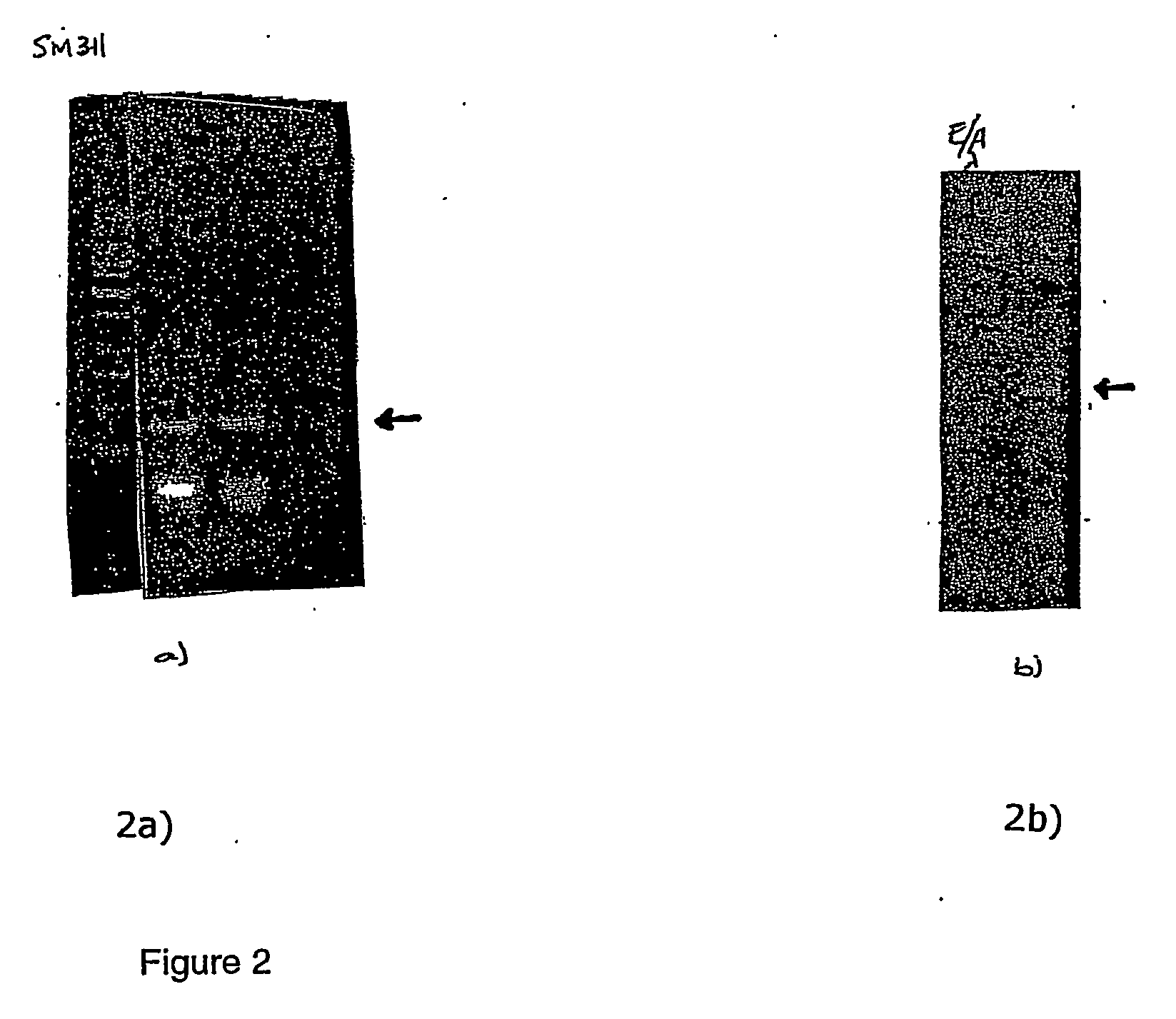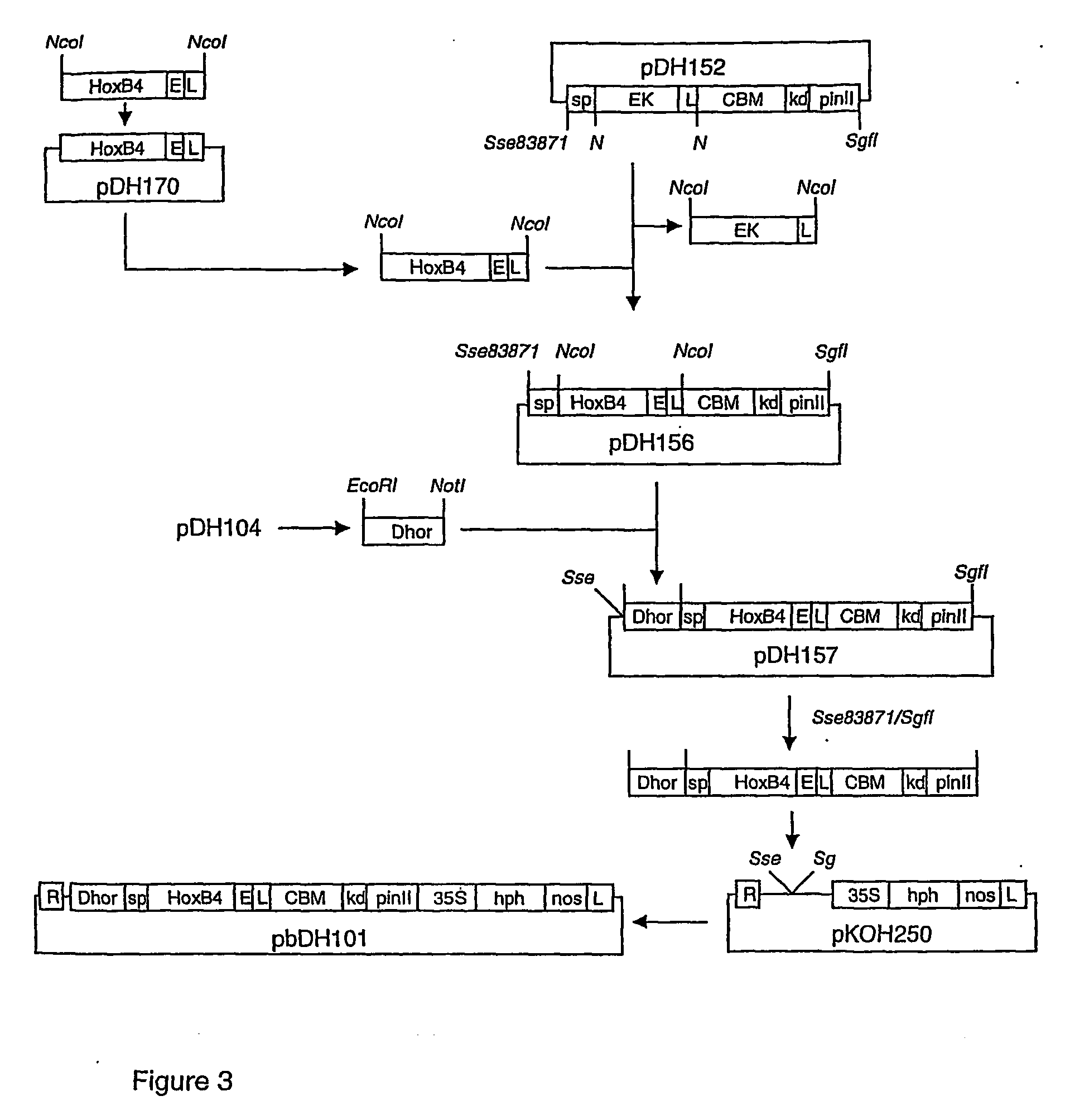Enhancing accumulation of heterologous polypeptides in plant seeds through targeted suppression of endogenous storage proteins
- Summary
- Abstract
- Description
- Claims
- Application Information
AI Technical Summary
Benefits of technology
Problems solved by technology
Method used
Image
Examples
example 1
Analysis of “sink” proteins in Hordeum vulgarisendosperm
[0071] Protein expression analysis in Hordeum vulgarisseeds cultivar Skegla may be carried out using SDS-PAGE of proteins extracted from seeds collected at 49-days post anthesis (dpa) to identify those endosperm-expressed proteins that are major contributors to the total protein level of the endosperm and, therefore, potential candidate for targetal suppression. Whole seeds from five axes of barley were finely ground by hand in liquid nitrogen before addition of the appropriate extraction buffer. Two kinds of extraction buffers, in addition to aqueous extraction, where used on both samples. Firstly, the extraction of total proteins was performed under reducing conditions with ethanol extraction (70% EtOH) in the presence of 1% 2-Mercaptoethanol, 10 mM Tris-HCl pH 8.0 and 1% Polyvinyl pyrrolidine (MW 360.000). Secondly, the extraction of total proteins was performed under reducing conditions in the presence of 170 mM NaCl, 1% ...
examples 2
Selection of Promoter for Targetal Suppression of B- and C-Hordeins in Hordeum Vulgare used as an expression vehicle for heterologous proteins
[0073] The gene promoters of B-hordeins (GenBank Accession No. X53690) and C-hordeins (GenBank Accession No. M36941) contain 100% identical cis-acting elements identified in both of them that participate in their transcriptional regulation (Muller and Knudsen 1993; Vicente-Carbajosa et al. 1992). These cis-elements are within the so-called endosperm box (EM) located about 300 bp upstream of the translational start codon. EM harbours two distinctive cis-acting motifs for transcription factor binding, the prolamin box (PB), 5 ′-TGTAAAG-3′, and the GCN4-like motif (GLM), 5 ′-(G / A)TGA(G / C)TCAT-3′. The GLM is recognized by two transcription factors, BLZ1 (GenBank Accession No. X80068), and BLZ2 (GenBank Accession No. X80068). Upon binding, transcription of the particular gene is activated (see Onate et al. 1999). Both these genes are single copy ...
example 3
Cloning of D-hordein coding region and analysis of endogenous expression of D-hordein gene at RNA level
[0078] A sense primer, 5 ′GGAATTCC EcorI ATGGCTAAGCGGCTGGTCCTC (SEQ ID NO: 12), and an antisense primer, 5 ′GGAATTCCEcorI TTGCAATTGGATAGGTCTCTTG (SEQ ID NO: 13), were designed to amplify a 727 bp fragment from the coding region of the D-hordein gene as described in GenBank sequence Id. X84368. The composition of the reaction solution used to amplify the 727 bp fragment, using the genomic DNA from Hordeum vulgare cv. Skegla as the template, was the following:
Genomic DNA solution4μl (50 ng)Sterilized water12μl10x PCR buffer [100 mM Tris-HCl (pH 8.8)2.5μl500 mM KCl, 0.8% Nonidet P40]50 pmol / μl Sense primer1μl (50 pmol)50 pmo1 / μl Antisense primer1μl (50 pmol)MgCl21μl (2.5 mM)dNTP2.5μl (1 mM)Taq DNA polymerase (Fermentas)1μl (5 U)Total25μl
[0079] The above reaction solution was mixed thoroughly, except 9 μl of sterilized water and the Taq DNA polymerase, and the solution heated to 94...
PUM
 Login to View More
Login to View More Abstract
Description
Claims
Application Information
 Login to View More
Login to View More - Generate Ideas
- Intellectual Property
- Life Sciences
- Materials
- Tech Scout
- Unparalleled Data Quality
- Higher Quality Content
- 60% Fewer Hallucinations
Browse by: Latest US Patents, China's latest patents, Technical Efficacy Thesaurus, Application Domain, Technology Topic, Popular Technical Reports.
© 2025 PatSnap. All rights reserved.Legal|Privacy policy|Modern Slavery Act Transparency Statement|Sitemap|About US| Contact US: help@patsnap.com



